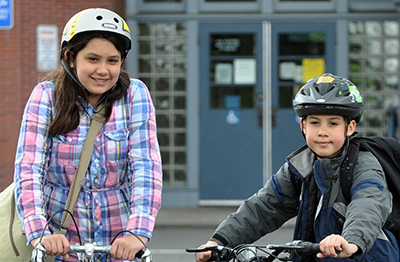 Childhood obesity has tripled in the United States over the past 40 years, with nearly one third of children and teens in the United States overweight or obese. The epidemic is related to the fact that, even though studies show that regular physical activity promotes important health benefits and reduces risk for obesity, most communities have not prioritized built environment policies that support physical activity. As a result, many children do not have the opportunity to engage in
Childhood obesity has tripled in the United States over the past 40 years, with nearly one third of children and teens in the United States overweight or obese. The epidemic is related to the fact that, even though studies show that regular physical activity promotes important health benefits and reduces risk for obesity, most communities have not prioritized built environment policies that support physical activity. As a result, many children do not have the opportunity to engage in
adequate physical activity each day.
One way to increase physical activity opportunities is to increase access to recreational facilities. Historically, schools have had a variety of recreational facilities, such as gymnasiums, playgrounds, fields, courts, and tracks. However, most of these schools close their property to the public during non-school hours, such as weekends, holidays, summer break, and before and after school, because of concerns about costs, vandalism, security, maintenance, and liability in the event of injury. Unfortunately, these concerns can have a huge effect on health, as access to recreational facilities is associated with lower body mass index among children and increased physical activity among adults. Luckily, shared use (or joint use) agreements have become a popular strategy for addressing these concerns while also creating built environment policies that encourage partnerships and support healthy lifestyles.
Click here to download the resource: Addressing Childhood Obesity Through Shared Recreational Facilities (Safe Routes Partnership, 2013).

